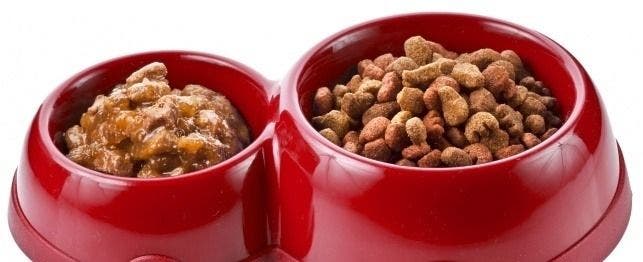
Feeding Your Dog – Canned or Dry And How Often?
After bringing your dog home, one of the first decisions to make is what to feed him, how much to feed him and how often do you feed your new family member. Once you have decided what to feed your dog, deciding between canned food and dry food can be difficult.
Canned or Dry
Most dry dog foods are soybean, corn or rice based. Some of the better brands have meat or fish meal as the first listed ingredient. Although higher priced, they are worth looking into. Dogs eat less of the higher quality products, thus reducing the cost. Dry dog foods also have greater “caloric density” which means simply, there is less water in a cup of food as compared to a canned food diet. This is not a big issue for our smaller canine friends, but large dogs may have difficulty eating enough volume of canned food to fulfill their caloric needs (because they also get a lot of water in that food). Overall, the choice of “dry” vs. “canned” vs. “semi-moist” is an individual one, but larger dogs (such as those greater than 30 pounds) should be fed a dry or semi-moist food in most circumstances.
How Often
There are various methods of feeding dogs. Sometimes, the age and size of the pet plays a role and sometimes the habits of the dog. There are two common methods of feeding; free choice and limited time feeding.
Free Choice
Many people choose to keep the dog food bowl full at all times. This allows the dog to eat whenever he wants and can also eat as much as he wants. Though very easy, this method of feeding is usually not recommended. By keeping the bowl full, you cannot monitor the amount of food your pet is eating, leading to obesity. If your family includes several dogs, free choice feeding often makes it difficult to determine if one pet is eating more or eating less. For some dogs that eat small amounts frequently throughout the day or toy breed dogs prone to hypoglycemia (low blood sugar), free choice feeding may be acceptable. Each morning, the bowl is filled with the day’s ration. Regardless of when the bowl is emptied, no more food is to be added to the bowl until the following day, else you end up with a chubby puppy.
Limited Timed Feeding
The preferred method of feeding is to feed small meals, several times through the day. The day’s total ration is divided over several feedings. The number of feedings is based on the pet’s age and size. For each feeding, the specified amount of food is offered to the dog. If not eaten right away, the food should be removed in 20 minutes and not offered again until the next scheduled feeding. It may take your pup several tries to understand that he needs to eat the food when it is offered, or a meal will be missed.
Puppies less than 3 months of age should be fed four times per day. For example, if your puppy’s size and age dictates that he should be fed one cup of food per day, offer 1/4 cup food four times a day. If the pup does not eat at one of the feedings, don’t add more food later. Each feeding, regardless of if it is eaten or not, should contain 1/4 cup of food.
When the pup is between 3 to 6 months old feed three meals per day. Remember to check the manufacturer’s recommendations on how much to feed. As your puppy ages, his size increases, and he will need more food each day. This amount of food is divided into 3 feedings.
Once your dog is over 6 months of age, his adult feeding pattern can be established. Some dogs do well on one feeding a day but two feedings a day is usually recommended. Small breeds and toy dogs should continue to be fed three times a day, to help prevent hypoglycemia.
For multi-dog families, limited time feeding is recommended. You may even have to feed each dog in a separate room. Provide the allotted amount of food and only allow access for 20 minutes. When the time is up, remove the food bowls and any remaining food. This can help you monitor each dog’s appetite and help prevent a dog on a diet from taking an extra helping.
Routine
Dogs thrive on routine so decide on a feeding pattern early in your pet’s life and stick to it. You may want to consider feeding your dog while the family dines. This can occupy your pet while the family eats and keeps him from begging or creating problems during the family meal.